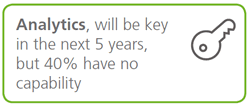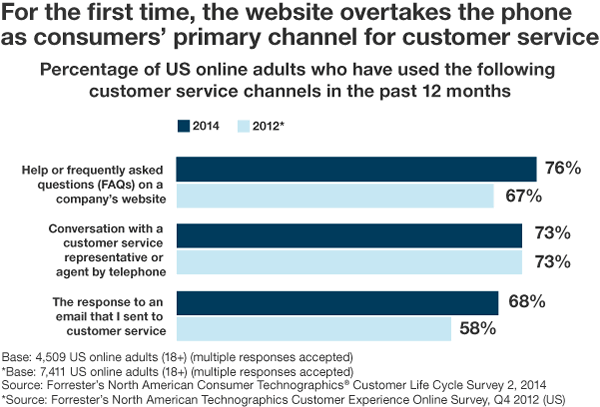One of the most pressing challenges for contact centers concerns contact center analytics. In a channel-agnostic and increasingly digital contact center context, data regarding call handling times, transactional measures overall and channel usage aren’t enough.
Cross-channel interaction analytics become key and agent performance needs a different measurement approach. The focus is on the business and the value creation in a shift towards a more strategic role of the contact center. This also means that analytics need to be better connected with overall business KPIs and the customer experience, de facto becoming the number one measure in the contact center.
Contact center analytics: a must with missing pieces

According to the 2015 edition of Dimension Data’s annual Global Contact Center Report, contact center analytics will be key in the next 5 years but 40% of surveyed contact centers have no data analysis tools.
With analytics voted as the top factor to change the shape of the industry within the next 5 years, it’s worth looking at the reasons of the de facto lack of tools to analyse.
One of the issues at hand is that most surveyed industry professionals can gauge their contact center agents’ performance and have capability scorecards but only 60.1% is able to translate these dashboards into business performance information reports. The bigger picture is missing, many channels are missing (such as social media), there are no big data trend reviews, no root cause trend analyses.
The lack of analytics tools is remarkable, given the fact data and analytics are increasingly becoming incorporated into several functions and departments.
Contact center analytics: an uncharted frontier for many
TechTarget’s SearchCRM published a piece emphasizing this fact and stating that “content center analytics are still an uncharted frontier”.
When we look at the reasons of the lack of a clear and holistic analytics approach, we invariably encounter the same issues as we do in so many other areas:
- Data sits in silos, technologies and tools are disjointed and not integrated with the wider enterprise, processes are not aligned, let alone connected, etc.
- Contact centers are often still seen as cost centers and from an enterprise architecture perspective not as an integral part, something Dimension Data strongly advises to do.
- Several channels that are added to the omni-channel contact center mix are not integrated (with digital and mainly social as a typical component).
These are the known issues but there is more. The article on SearchCRM looks at the hurdles in an interview with Lori Bocklund, president of Strategic Contact, an independent contact center consultancy.
Lori Bocklund confirms the view of the perception of contact centers as cost centers and, although she sees that analytics are gaining attention, she sees the challenges and shares some other reasons why the adoption is hard.
Among the challenges according to Lori Bocklund:
- Getting the budget and buy-in for dedicated analytics staff, which doesn’t come cheap.
- Prioritization: many companies still try to get budgets for other necessary investments in areas such as workforce management or quality monitoring.
The speed of contact center analytics adoption
So, the adoption of contact center analytics will depend on the type, core activities, size and position of the contact center, on top of the priorities. But, as Lori states, the increasing focus on the customer experience and the customer journey will help with that adoption.
One thing is for sure: the global CRM analytics market, which includes contact center analytics, is poised for growth. According to research from Research and Markets, it is expected to grow from $4.18 billion in 2014 to $7.65 billion by 2019.
Among the drivers of that growth: the need to have a 360° view of not just the customer but most of all of insights enabling to find opportunities to cross-sell, up-sell and improve customer satisfaction, all areas where the omnichannel contact center as a customer hub instead of a cost center, increasingly plays an integrated role in.
As customer service has gone digital and, according to Forrester Research, for the first time ever the website (FAQs, self-help) has overtaken the phone as consumers’ primary channel for customer service in the US, not just the deployment of digital channels but also analytics will matter more.
While the telephone (73%) and email (68%) still play important roles it’s remarkable that 76% of US consumers look for information themselves on websites. It’s yet another challenge as de facto often contact center agents don’t know what’s on the website.

Fitting contact center analytics into the broader company picture

Forrester’s Ian Jacobs emphasized the need for contact center and customer service metrics to support broader company KPIs. As Ian says – and yes, it might be a cliché indeed – you can’t manage what you can’t measure.
But you also can’t improve if you don’t measure. And, lacking a more integrated analytics approach, you sure can’t up-sell or optimize the end-to-end customer experience.
Want more? This blog on the website of Sykes, a global provider of customer contact management solutions and services in the business process outsourcing (BPO) space, offers a good start.
Dimension Data’s 2015 Global Contact Centre Benchmarking Report, © Dimension Data 2009-2015.






